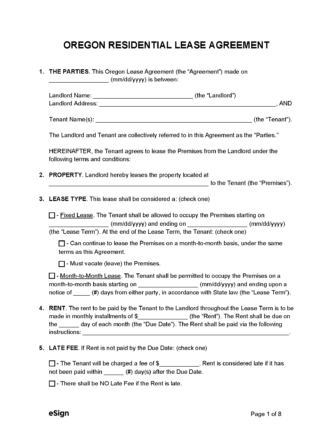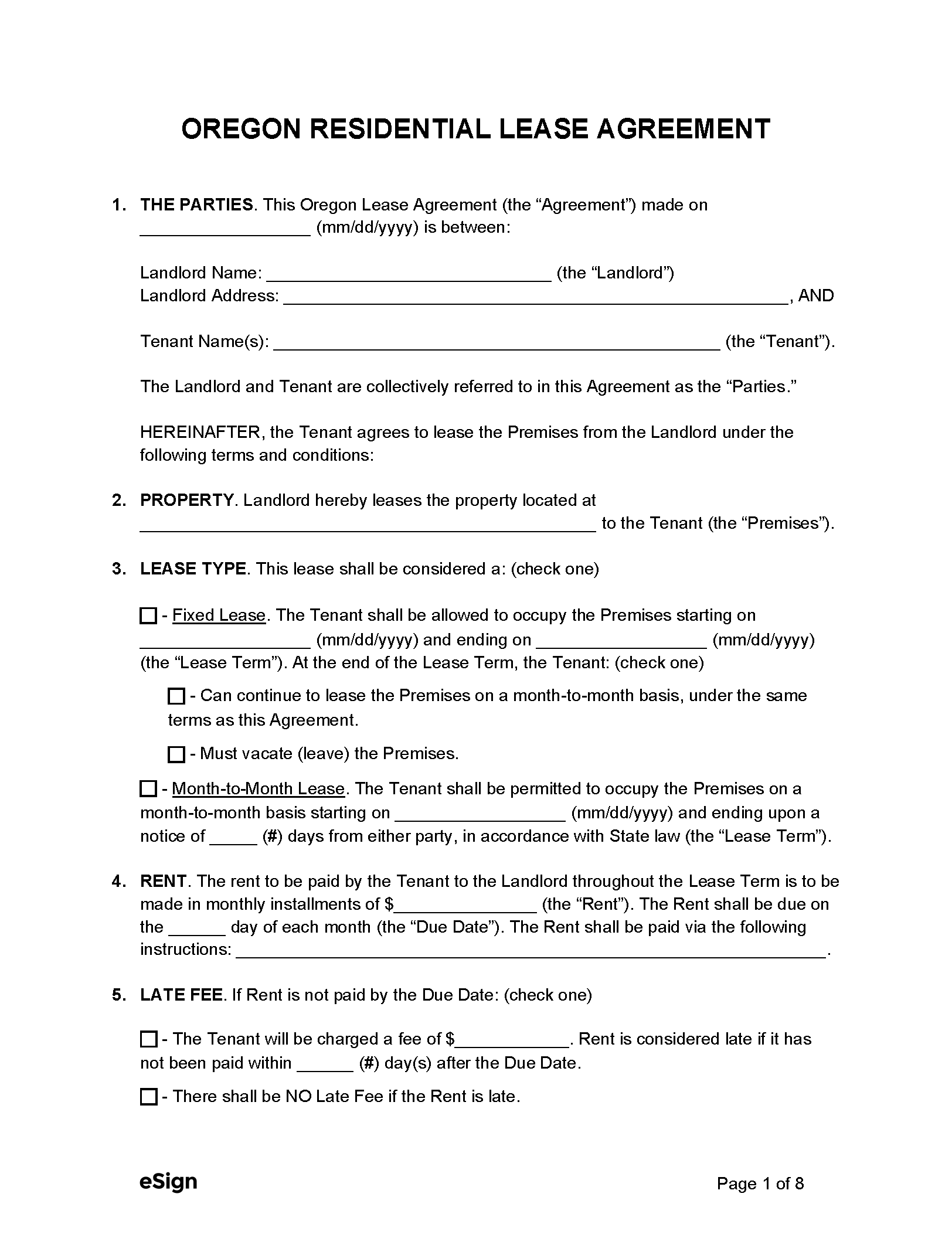
An Oregon lease agreement is a contract that spells out the terms and conditions of a tenancy arrangement for either commercial or residential property . The agreement will describe the landlord’s expectations for the tenant , including the length of the rental term, the monthly cost, prohibited activities, and security deposit requirements.
An Oregon lease agreement is a contract that spells out the terms and conditions of a tenancy arrangement for either commercial or residential property . The agreement will describe the landlord’s expectations for the tenant , including the length of the rental term, the monthly cost, prohibited activities, and security deposit requirements.
PDF Download
An Oregon lease agreement is a contract that spells out the terms and conditions of a tenancy arrangement for either commercial or residential property . The agreement will describe the landlord’s expectations for the tenant , including the length of the rental term, the monthly cost, prohibited activities, and security deposit requirements.
4.5 | 13 Ratings Downloads: 1,540
Rental Application – Landlords can use this form to obtain and assess background information from lease applicants prior to signing the lease agreement.
Maximum Amount ($) – There is no statutory limit to the amount a landlord can demand as a security deposit.
Collecting Interest – No state statute requires the landlord to collect interest on the security deposit for the tenant.
Returning to Tenant – The landlord must return deposits within 31 days from the date the tenancy is terminated and the tenant surrenders the property. [12]
Itemized List Required? – Yes, a written statement describing any deductions from the security deposit or prepaid rent must be given to the tenant within 31 days of the tenancy ending. [13]
Separate Bank Account? – No law requires a landlord to keep the security deposit in a separate bank account.
General Access – The landlord must give the tenant at least 24 hours’ notice before accessing their rental unit. [15]
Immediate Access – The landlord has the right to enter the rental unit without consent notice for emergency purposes. [16]
Grace Period – Landlords must wait until rent is four days late before charging late fees. [17]
Maximum Late Fee ($) – A landlord may charge “reasonable” late fees in one of the following three ways [18] :
Bad Check (NSF) Fee – A landlord may charge a fee of $35 for a bad check. [19]
Withholding Rent – If the landlord fails to repair a minor habitability defect, such as leaky plumbing or faulty light switches, the tenant may repair it themselves and deduct it from the rent if the repair costs $300 or less. [20] If essential services are disrupted and the landlord does not remedy the issue after notification, the tenant may be excused from paying rent . [21]
Non-Payment of Rent – The landlord may provide the following notices to quit depending on the circumstances [22] :
Non-Compliance – A 30-day notice to quit for non-compliance may be given to inform tenants that they have 14 days to remedy a lease violation or be evicted. [23] A 10-day notice to quit may be served for a subsequent infraction without the option to cure.
Lockouts – Landlords risk legal consequences if they attempt to exclude or remove the tenant from the property without a court order. [24]
Leaving Before the End Date – If a tenant vacates before the end date, they will owe rent until the end of the lease period unless another tenant is found. The landlord has the responsibility to mitigate damages by attempting to rerent the unit. [25]
Month-to-Month Tenancy – Landlords can terminate a month-to-month lease with a 30-day notice to quit during the first year of occupancy. After the first year, they can terminate with 90 days’ notice but only in certain circumstances. [26]
Unclaimed Property – The landlord must send a written notice to a tenant to ask them to pick up any property they left behind. The tenant must contact the landlord within five days if notified in person or eight days if notified by mail, and then pick up their belongings within fifteen days, otherwise the landlord may dispose of the property. [27]